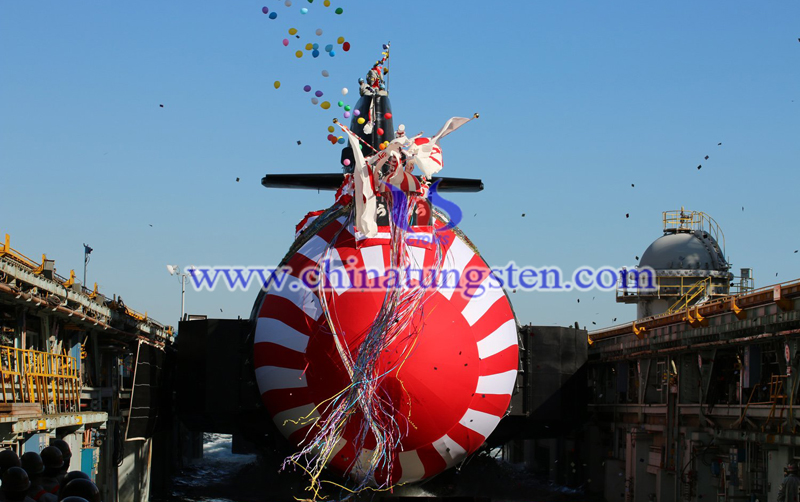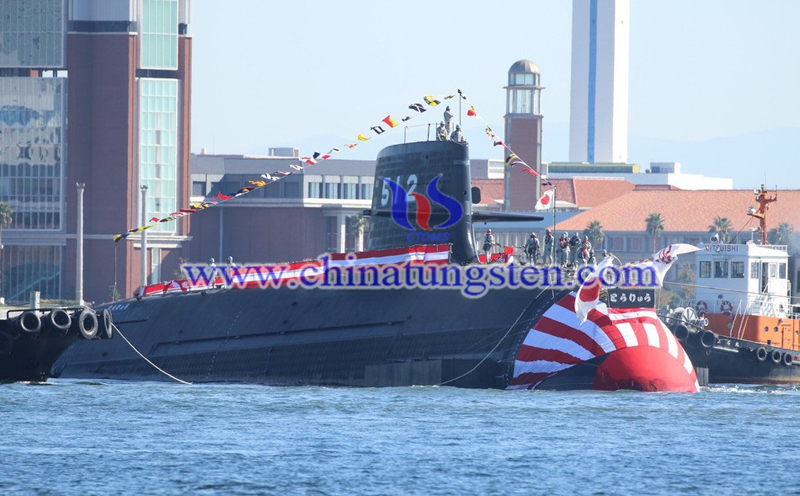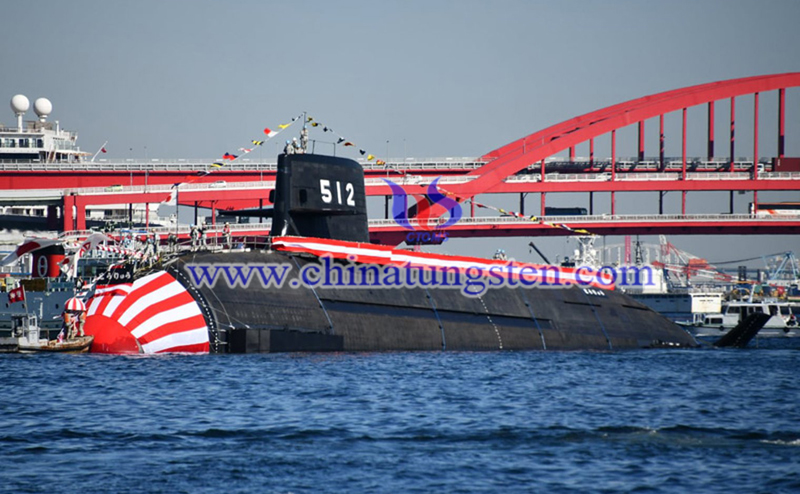Japan Launched Second Submarine Fitted with Lithium-Ion Batteries
- Details
- Category: Tungsten's News
- Published on Tuesday, 19 November 2019 13:22
The Tōryū-class diesel-electric attack submarine (SSK) for the Japan Maritime Self-Defense Force (JMSDF) equipped with lithium-ion batteries entered the water in a ceremony held at Kawasaki Heavy Industries (KHI)'s facilities in Kobe on the morning of November 6. It is the second lithium battery attack sub in Japan and as the Japanese next-generation sub verification boat numbered as SS-512.

Previously, Japan produced a total of 12 class attack subs, namely SS-501 Sōryū (Blue Dragon), SS-502 Unryū (Cloud Dragon), SS-503 Hakuryū (White Dragon), SS-504 Kenryū (Sword Dragon), SS-505 Zuiryū (Auspicious Dragon), SS-506 Kokuryū (Black Dragon), SS-507 Jinryū (Benevolent Dragon), SS-508 Sekiryū (Red Dragon), SS-509 Seiryū (Pure Dragon), SS-510 Shōryū (Soaring Dragon), SS-511 Ōryū (Phoenix Dragon) and SS-512 Tōryū (Fighting Dragon). Among them, SS-510 Soaring Dragon is the first Japanese lithium battery submarine which was launched on October 4, 2018. It is currently under armoring and will begin its trial.
As the latest generation submarines in Japan, there are both advanced features and disadvantages in the Tōryū class sub. The Advantage is compared with AIP, it does not rely on aerodynamic technology, the Tōryū-class attack sub fitted with lithium-ion batteries could lurk underwater for 30 days, and owns the characteristic of fast charging and fast underwater navigation. The Disadvantage is that the sub-body size is large, during the fighting in the sea area, its maneuverability will be limited. It is worth mentioning that the attack sub has a large safety hazard. This year, there were 14 Russian submarine experts lost their lives because of the battery compartment fires. General submarines are likely to use safer lead-acid batteries.

Compared with traditional lead-acid batteries, lithium batteries own higher power density, smaller size, and weight, and could be designed to fit the actual needs. The security issues have always been one of the main bottlenecks in the development of lithium batteries. Once the submarine explodes due to fire on the lithium-ion batteries, all personnel inside the attack sub would lose their lives.
In terms of safety performance, in recent years, energy storage scientists have indicated that lithium battery electrodes could be appropriately added with defective tungsten oxide as a modifier, as the tungsten oxide possesses the feature of high-melting temperature and low-volume expansion effect to reduce the safety hazard probability of the li-ion batteries.

Japan's apparent deployment of reliable submarine lithium-ion battery technology marks a second major leap forward in the capabilities of affordable conventional attack subs in the last twenty years. China and South Korea are also developing lithium-ion batteries submarines.
- Tungsten Manufacturer & Supplier, Chinatungsten Online: www.chinatungsten.com
- Tungsten News & Prices of China Tungsten Industry Association: www.ctia.com.cn
- Molybdenum News & Price: news.molybdenum.com.cn
- Tel.: 86 592 5129696; Fax: 86 592 5129797; Email: sales@chinatungsten.com



 sales@chinatungsten.com
sales@chinatungsten.com